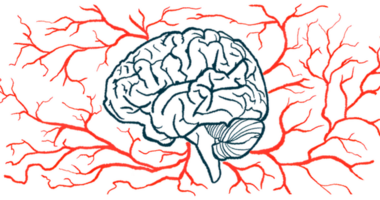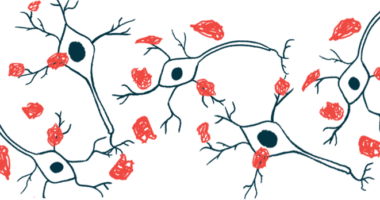Wireless DBS rallies neuron activity, motor function in Parkinson’s mice
Nanoparticle-based system also eliminated clumps of alpha-synuclein

A nanoparticle-based wireless deep brain stimulation (DBS) system restored the activity of degenerating neurons and increased dopamine release in cellular and mouse models of Parkinson’s disease, a study shows.
The technology also eliminated alpha-synuclein clumps, a hallmark feature of the disease, and improved the animals’ motor abilities.
According to a news story from the University of Chinese Academy of Sciences, where the study was performed, the system has several advantages over traditional DBS, including eliminating the need for implanted electrodes and allowing for the specific modulation of degenerating neurons in targeted brain regions.
The study, “A nanoparticle-based wireless deep brain stimulation system that reverses Parkinson’s disease,” was published in Science Advances.
Parkinson’s disease is caused by the progressive dysfunction and death of dopaminergic neurons, the nerve cells responsible for producing dopamine, a chemical messenger involved in motor control. These neurons are mainly found in a brain region called the substantia nigra. The formation of abnormal clumps of proteins, which are mainly composed of aggregated alpha-synuclein, are toxic to neurons and are believed to be a key factor for neuronal dysfunction.
DBS is a surgical treatment for Parkinson’s that’s typically used to treat motor symptoms in those with advanced disease and in whom medication has failed to control the symptoms. It generally involves implanting electrodes connected to a small pacemaker-like device that’s placed under the skin into specific brain regions where it delivers electrical signals that modulate neuronal activity.
The treatment is associated with certain risks, including cognitive decline and emotional issues, such as depression and anxiety, that may be associated with the permanent implantation of electrodes.
Testing nanoparticle-mediated wireless DBS in Parkinson’s
The investigational system developed by researchers in China consists of three core modules, including one composed of gold nanoparticles that convert near-infrared light into heat for activating temperature-sensitive calcium channels called TRPV1. This module is bound to TRPV1 antibodies conjugated with nanoparticles that target dopaminergic neurons, along with small protein fragments called peptides that bind to a specific region in alpha-synuclein aggregates, allowing for their destruction.
Nanoparticles bind to dopaminergic neurons via the TRPV1 receptors and, irradiated with near-infrared light, convert light into heat. This activates the receptors and restores dopaminergic neuron activity. Meanwhile, the system releases peptides that allow for the alpha-synuclein aggregates to be cleared.
The technology was shown to increase the activity of dopaminergic neurons under laboratory conditions and to decrease alpha-synuclein aggregates and the degeneration of dopaminergic neurons in a cellular model of neuronal degeneration.
The system was also tested in a mouse model of Parkinson’s. After the nanoparticles were surgically injected into the mice’s substantia nigra, they mainly localized and bound dopaminergic neurons within this region, and induced the activation of dopaminergic neurons and dopamine release into the striatum, another brain region involved in motor control.
The nanoparticles also cleared alpha-synuclein clumps and reduced their spread to other brain regions by activating autophagy pathways. Autophagy is a recycling mechanism through which cells break down unwanted molecules, such as protein aggregates. The mice treated with nanoparticles showed restored dopaminergic activity and improved motor function.
The increased temperature achieved by the therapy didn’t damage dopaminergic neurons within the substantia nigra, suggesting a “good biocompatibility of this therapeutic system,” the researchers wrote. “Collectively, our findings indicate that [nanoparticle]-mediated wireless DBS therapy is a viable concept worthy of additional consideration in the search for an effective [Parkinson’s disease] remedy.”







